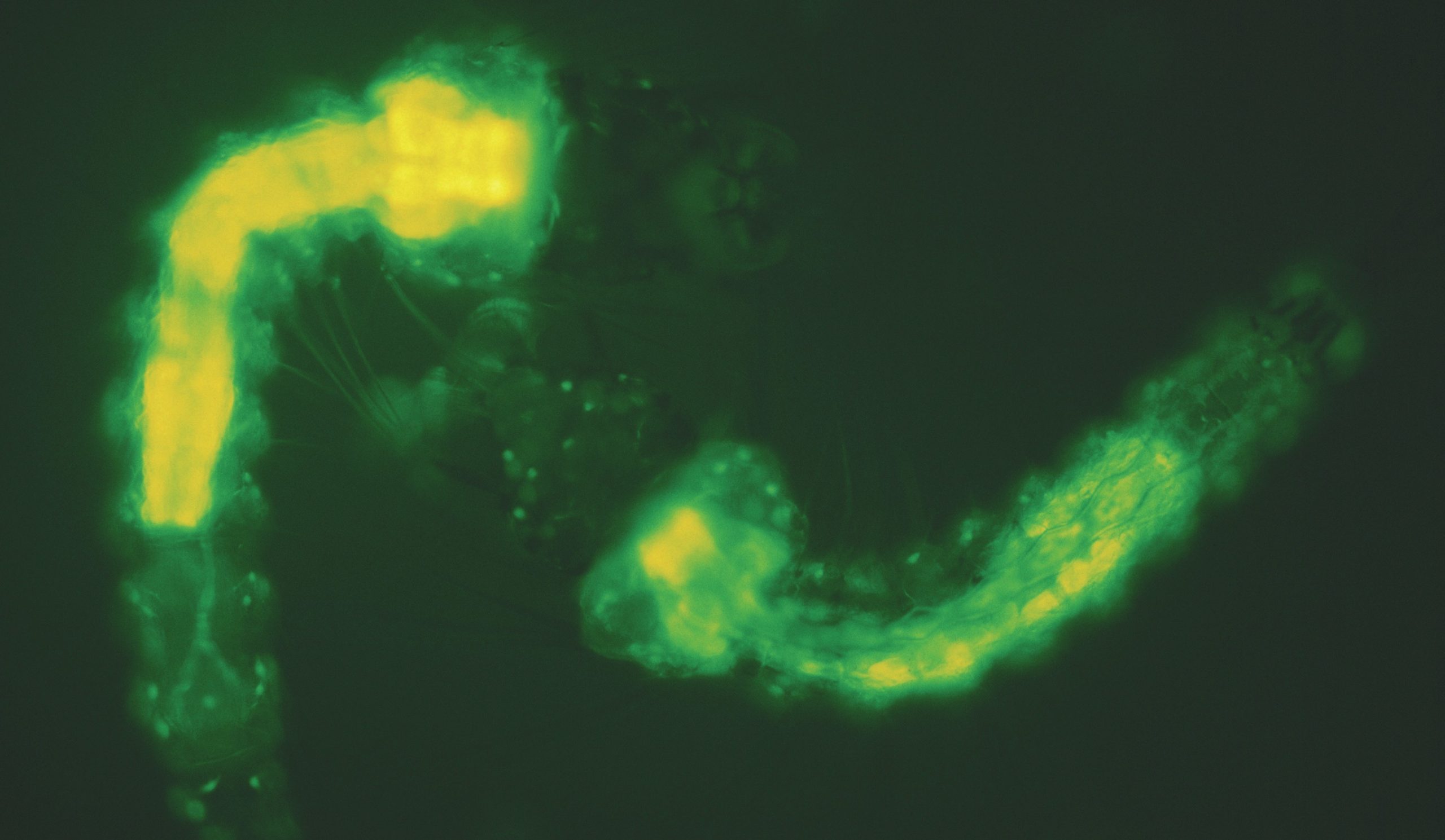
Light micrograph of two genetically modified Anopheles mosquito larvae glowing under ultraviolet light. A gene for green fluorescent protein has been introduced into these mosquitoes. The green glow shows that the gene has been successfully introduced. This raises hopes that a gene could be introduced that would make the mosquitoes unable to carry the Plasmodium protozoa that cause malaria. ×40
Malaria infects 500 million people every year and kills over 2 million. The disease is caused by the protozoon Plasmodium. This parasite is transmitted between human hosts by mosquitoes. The disease is mainly prevalent in tropical and subtropical countries (see Figure 1). There are drugs available to prevent or cure malaria but these are often unavailable to people in developing countries because they are expensive. Significant measures have already been taken to educate people in areas where malaria is a threat, and to provide them with preventative resources such as mosquito nets and insecticides. Such developments have not solved the problem of malaria — the only solution is to eradicate the disease completely.
Mosquito
Your organisation does not have access to this article.
Sign up today to give your students the edge they need to achieve their best grades with subject expertise
Subscribe




